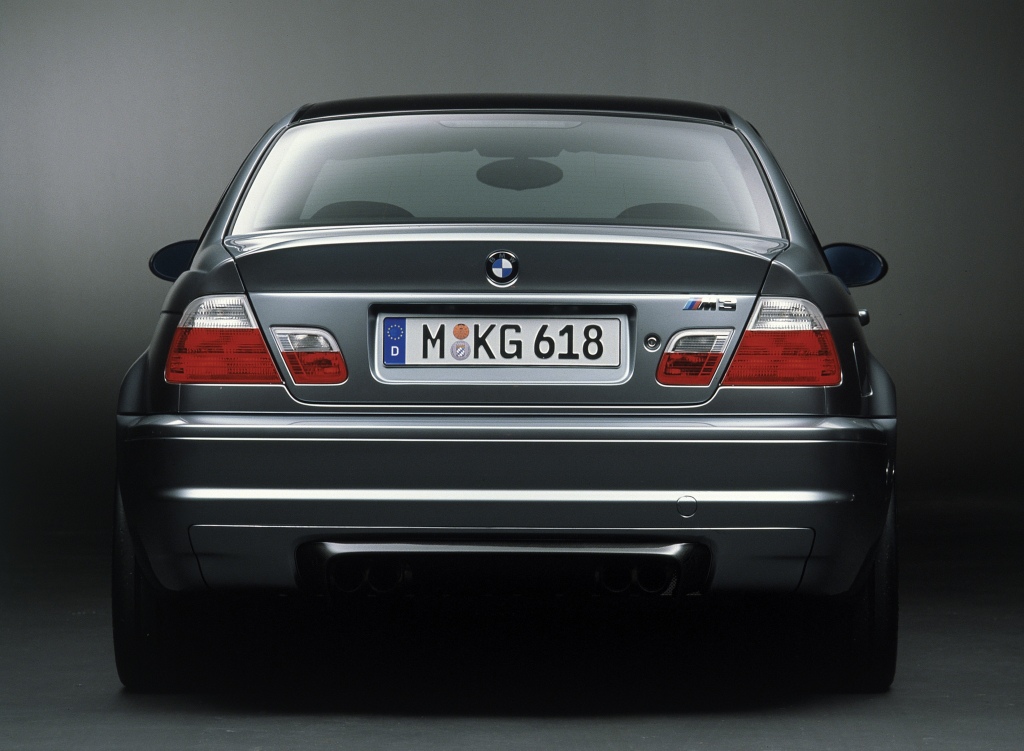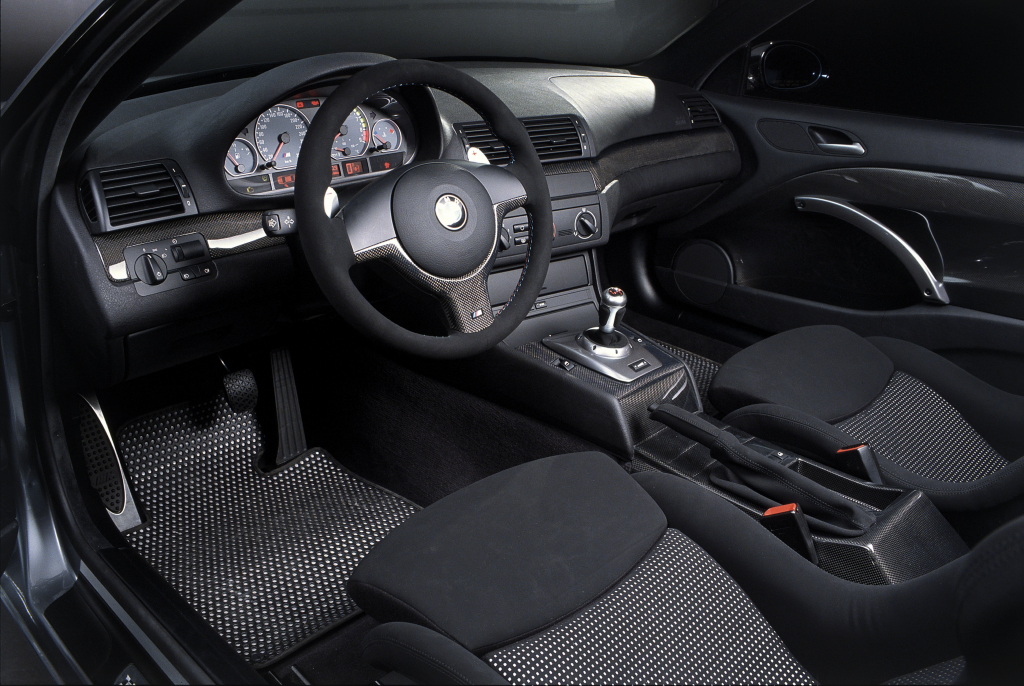A lot of articles are written in the internet trying to explain what the BMW M3 CSL is.
Interestingly, in most cases the authors have not seen an M3 CSL live, let alone drive one. The Wikipedia article is wrong and I tried to correct it a few times but the internet experts prevail.
Here's the information about the M3 CSL.
The M3 CSL is inspired by the E9 3.0 CSL which was the road version of the legendary E9 CSL race car.
CSL stands for Coupe Sport Lightweight and the emphasis is on reducing the weight to improve handling, acceleration and braking.
The M3 CSL is based on the E46 3 series platform.
The prototype - M3 CSL Concept - was presented in 2001 at the Frankfurt Motor Show.
As a prototype, it was quite spectacular as the materials used in the car would normally be found in F1 cars or high spec race cars.
Up to this point in time, no other cars were using such materials and being track focused like the M3 CSL.
Most of the features of the M3 CSL Concept were used in the production car. Sadly some of them were not used. The most important ones which were not used were:
1. Carbon engine cover
2. Titanium exhaust and carbon fiber exhaust tips // you will see many years later a lot of exhaust manufacturers starting making such exhausts. Akrapovic was one of the first manufacturers (of course Gruppe M too).
3. Bucket seats with holes for harness
4. More aggressive front bumper flaps
5. Front subframe reinforcement made from carbon/kevlar
6. Carbon mirror covers
photos of the M3 CSL concept car






Thankfully, some things were different in the production car when compared to the concept car.
1. Bespoke M3 CSL wheels

The main reason why BMW invested in the M3 CSL was to acquire experience with large scale production of carbon fiber components.
The M3 CSL was the first production car in the world with a carbon fiber roof. Additionally, the car has a carbon fiber front bumper, intake manifold, door panels, center console, rear bumper carrier and diffusor.
The E63 M6 and E92 M3 followed with carbon fiber roofs and additional carbon parts (mirrors etc). Finally we saw the BMW i3 and i8 electric cars having all carbon chassis.
All of 1383 M3 CSLs were produced in 2003 at the Munich factory.
The cars were available in two colors, silver gray and sapphire black.
The most popular color is the silver gray.
The focus on the CSL was on driving dynamics and this was achieved by reducing the weight, reducing the center of gravity, reducing the weight at the edges of the car, widening the track, producing an innovative semi-slick tyre with Michelin, making the engine response sharper and turning the suspension to make all this work.
A comprehensive list of different parts used in the CSL is available here, but here I will explain a bit more about the M3 CSL.
The BMW press document is here.
1. The tyre - the original Michelin Pilot Sport Cup
BMW with Michelin developed the first road-approved Michelin semi-slick tyre - the Michelin Pilot Sport Cup which was designed for the M3 CSL.
Porsche used this tyre after it was released on the CSL, in their GT3 cars.
Again, up to the point in time the M3 CSL was released in production, semi-slick tyre was not a thing in sports or hyper cars.
The tyre had a very large surface to groove ratio, very soft rubber (treadwear rating of 80) and small tread profile to ensure better traction and handling.
The M3 CSL was the first car to achieve 1.4g lateral acceleration.
As these tyres had very few grooves, handling in the wet was not great and aquaplanning would occur easily in standing water.
When clients would order the car with the Cup tyres, they would have to sign a waiver that they acknowledge being dangerous to drive in the wet with these tyres.
Additionally, BMW would have a sticker in the windshield indicating the car is equipped with Cup tyres.
The CSL tyre sizes are 235/35/19 in the front and 265/30/19 at the rear.
2. The Chassis
The CSL enthusiasts community was not able to determine yet whether the CSL chassis had more weld spots compared to the E46 M3 chassis but these are the confirmed differences.
- The CSL benefits from the carbon roof which is 7kg lighter than stock and increases the stiffness of the car (chassis torsional rigidity).
- There is no sound insulation whatsoever to reduce the weight.
- The rear fenders are rolled from the inside to increase tyre clearance.
3. Suspension
The suspension was quite different to the E46 M3 as the car is lighter.
The design is similar but the spring rates and damping is different. Some internet sites quote CSL have coilovers but that's incorrect.
Additionally, the bump stomps are different. Anti roll bars are more stiff and the front anti roll bar is hollow (the first hollow anti roll bar in a production BMW car).
Also, the front king pins are slightly different and increase the track by 10mm.
The rear bottom control arms are different. They are made of aluminium and they feature uniball bearings instead of bushings.
4. Brakes
BMW improved the brakes on the CSL but it's a bit unfortunate they had not fitted a multiple piston kit. The reduction of weight was probably the reason why they didn't want to install a more expensive kit, as the braking performance was effective.
- The front discs are larger in diameter - 345mm vs the 325mm E46 M3 discs.
- The front caliper carriers are bigger
- Carriers, front & rear calipers are painted black, unlike the normal M3.
- The diameter of the rear brake calipers (single piston) is larger to balance the brake bias due to the larger front discs.
- The rear discs are the same size as in the normal M3.
- The other significant difference is in the ABS unit, where we see for the first time in a production BMW the use of a race ABS software. This was done to utilize the grip of the Michelin Cup tyres.
The CSL held for several years the Sport Auto braking record (until the 997 GT2 RS beat this) for 200km/h -> 0 km/h distance.
This is quite impressive considering the CSL has relatively conventional brakes, but it demonstrates how important traction, weight and balance of the chassis are.
5. The Engine
On paper the engine of the CSL does not look much different compared to the normal M3. Maximum horsepower of 360PS versus 343PS.
But the significant difference is on how the engine accelerates and the throttle response.
So what is different ?
The CSLs had blueprinted engines. This means the components were from the best cast materials and the internal components were perfectly balanced (pistons and conrods).
The cylinder head is ported differently, it has different camshafts and different exhaust valves.
The intake manifold is carbon and it has alpha-N engine management. This means it does not use a Mass Air Flow (MAF) sensor but a Manifold Absolute Pressure (MAP) sensor) and it uses ram air (like motorbikes or race cars).
The hole you see on the left side of the front bumper is feeding air directly to the intake manifold.
The engine throttle response is very different on the CSL and the ram air helps it make extra power in higher speeds.
Ram air typically works above 150km/h and I believe (difficult to simulate this on a dyno) that the CSL at speed (200km/h) makes easily another 20PS.
Another interesting fact is that the BMW F1 engineers had worked on refining the CSL's engine management and gearbox software.
6. The gearbox
The CSL has BMW's sequential manual gearbox second generation (SMG II) which is found in the normal M3 E46.
It has very different software though and the gear changes are faster, downshifts feature rev matching (auto-blip) and it is the first production car with launch control - engineered by the BMW F1 engineers.
7. The carbon components
The CSL has a lot of carbon components. As mentioned previously, BMW wanted to acquire knowledge on mass production of carbon fiber components.
What is made out of carbon in the CSL
- Front bumper & bumper flaps (little spoilers)
- Intake manifold
- Roof
- Interior door cards (front and rear)
- Interior center console
- Radio blank-off cover when the car has no radio
- Rear diffussor
- Rear bumper carrier
- The pre-production CSLs had carbon rear seat backs, but not the production ones
8. The Wheels
The CSL has specific wheels in traditional BBS style. The wheels were made by BBS and they are forged and lighter than the M3 wheels.
Fronts are 8.5J x 19 and rears 9.5J x 19.
The same wheels were used in the later released M3 CS but the CS had narrower front rims - 8J x 19 while the rears were the same as in the CSL.
9. The electronics
The CSL was the first BMW featuring a special mode in the traction control system for the racetrack.
The name is 'M track mode' and it's activated via a button on the right side of the steering wheel.
The M track mode allows you to drift the car a bit more before it intervenes.
10. The Seats
Special seats were made for the CSL. The seats are based in the Recaro SPG but they are more friendly for everyday use.
Quite lighter than the ones on the normal M3, they also feature an incline mechanism which makes access to the rear seats easy.
Unfortunately BMW did not have on these seats holes for harnesses and a lot owners change them to aftermarket.
The rear seats are also a lightweight version and there is room only for 2 people, instead of 3.
The seats' material is alcantara and cloth.
11. Aerodynamics
The CSL had improved aerodynamics with a different front bumper, featuring the carbon flaps, a rear lightweight boot lid with the legendary duck tail and a rear diffusor.
The wind tunnel information is here.
12. Speed limiter
The M3 CSL was the first BMW offered without a speed limiter (option), in which case it would be de-restricted (unlike the typical 250km/h speed limiter).
13. Lightweight madness
BMW went to great lengths to reduce weight. Examples include:
- Different wiring harness, reducing all unnecessary cabling
- The normal M3 has an 'SMG' logo just before the gear selector. The CSL does not have one.
- The rear window is made from thinner glass
- The carpet on the left hand cars is thinner to reduce weight
- The boot does not have a switch to open it (like in the normal M3). You can open it only via the remote control or the internal switch
- The hand holders (in the roof) are removed
- The air condition microfilter mounts are re-engineered and are much lighter
- There is no sound insulation whatsoever. Bare chassis everywhere
-
Photos
You can find engine photos here and photos here.

